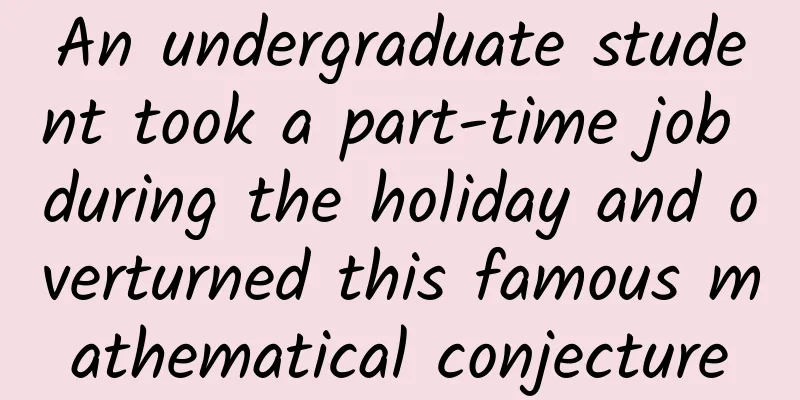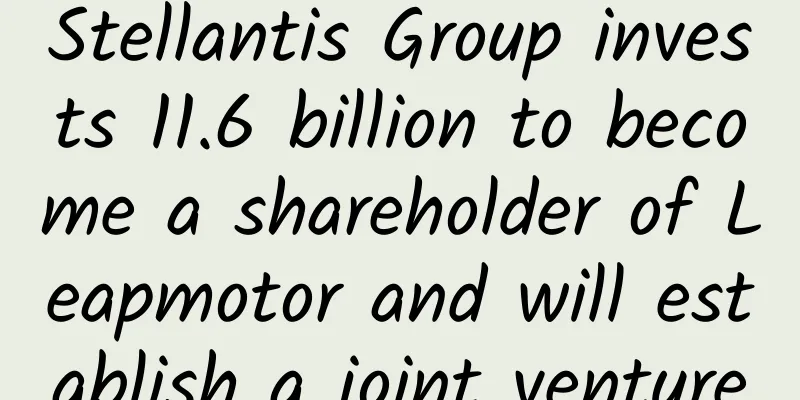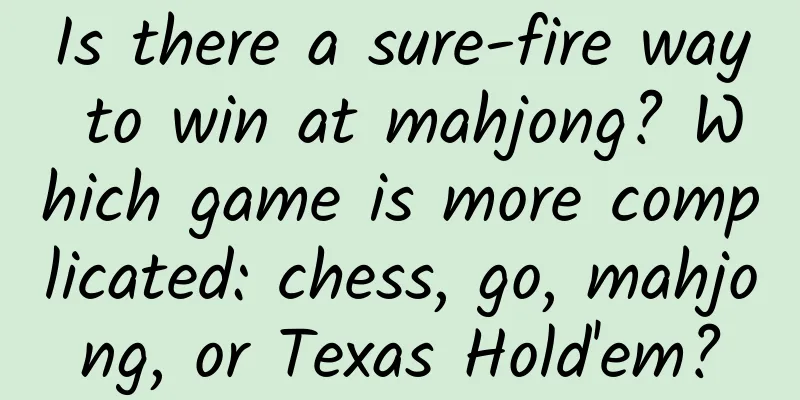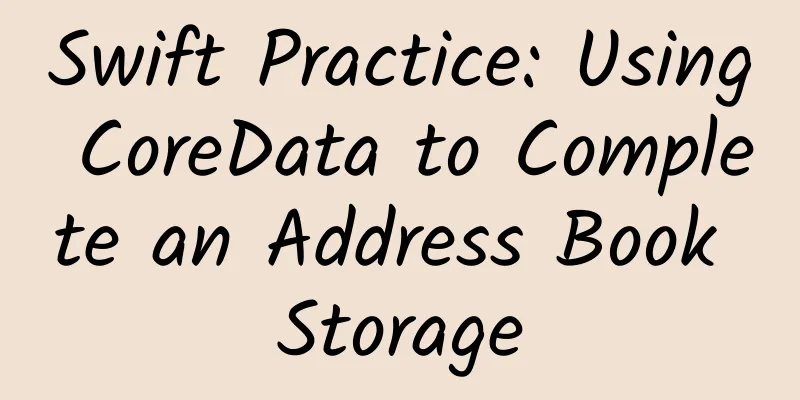An undergraduate student took a part-time job during the holiday and overturned this famous mathematical conjecture

|
An undergraduate and a first-year graduate student helped their supervisor with a project during the holiday break. In less than a month, their work overturned a famous conjecture in cutting-edge mathematics. Before this, almost all scholars in the field believed that the conjecture was correct, and the only problem was how to prove it. Now, the belief has collapsed, and a new chapter has begun. Written by | Jiawei Longing for vacation is a common human trait, regardless of educational background or major. Summer Haag, a first-year graduate student in the Department of Mathematics at the University of Colorado Boulder, and Clyde Kertzer, who is in the same department, began looking forward to this summer vacation as early as May this year. Kertzer is still an undergraduate student, and he plans to play a few games of football during the summer vacation and then carefully prepare for his graduate school application. Haag is looking forward to relaxing during the vacation and picking up his favorite sport of mountaineering again. However, when they heard that their mentor, number theory expert Katherine Stange, had announced a half-day summer research program, after some inner struggle, they finally decided that their passion for mathematical research outweighed their desire for a vacation, and they both decided to apply to join. Stange is interested in "problems that seem simple but have rich structures." The mathematical object her team is targeting this time is one of the oldest geometric structures in the history of mathematics. Stange's common research style is to solve elusive open problems in number theory by generating large data sets through computers. As the two youngest members of the project team, Haag and Kertzer are mainly responsible for relatively simple "physical labor" - expanding the algorithms and initial codes of mathematician James Rickards in the group, writing programs, generating large amounts of simulation data, and finally visualizing the numerical development trends when the mathematical structures become more complex. To everyone's surprise, within a month of joining the project, Haag and Kertzer's work had caught the entire field of number theory off guard. A large amount of data suggested that the conjecture that Stange's team had intended to prove was actually wrong. Before this, almost all scholars in the field believed that it was correct, and the only problem was how to prove it. This conjecture originated from the oldest compass and ruler construction problem, and was first discovered in the Renaissance through Descartes' wonderful theorem. In the middle, there was the insight provided by the Nobel Prize winner in Chemistry, and now it has entered the cutting-edge field of number theory... Its origins and development are like a longitude and latitude that runs through a miniature history of mathematics. And the starting point is ancient Greece more than 2,000 years ago. Ancient Greece: Apollonius's tangent circles Apollonius of Perga, who was born 2,200 years ago in Perga, Asia Minor (now in Turkey), was the second master of ancient Greek geometry after Euclid. His eight-volume Conics is a true classic in the history of mathematics, representing the highest achievement of Greek geometry. Apollonius of Perga | Source: Baidu Encyclopedia However, what we are going to talk about below is another of his works, "On contacts or Tangencies". Although the original On Tangents has been lost, we still have some information about it through citations and annotations by later generations of mathematicians. The most important record comes from the Synagoge, a book written about 500 years later by Pappus, who is known as the "last great geometer" of the Alexandrian school. Apollonius is considered one of the great mathematicians of antiquity. His work (seen here in a 9th-century Arabic translation) continued to develop the geometric ideas of Euclid about a century earlier. | Image credit: Bodleian Libraries/Oxford University Apollonius raised a difficult geometry problem in On Tangency: given three circles on a plane with no particular restrictions on their positional relationship, how can one use a ruler and compass to make a fourth circle tangent to the previous three circles? This is the famous Apollonius' problem. Apollonius found a graphical method and pointed out that for the most general case, there are a total of 8 possible solutions. The figure above shows one of the eight solutions: for three black circles in general position, the purple circle contains one of them and is tangent to all of them. The purple circle can contain one circle, two circles, all circles or none of them at the same time, but they are all tangent to all of them. | Image source: wiki Apollonian gasket Obviously, for a relatively special configuration of three circles, the fourth circle that can be tangent to all of them is likely to be less than 8. For example, if the three circles are restricted to be tangent to each other, there are only 2 possibilities for the fourth circle. As shown in the figure above, when the three black circles are tangent to each other, the red circle that is tangent to them at the same time either includes the three black circles or is located in the area between the three circles. | Image source: If we choose a large circle that encloses three small circles, we can continue to use the ruler and compass to perform the following operations: draw a circle inside the large circle, making it tangent to the three existing circles on the plane. Obviously, this process can continue indefinitely, using smaller and smaller circles to fill the gaps between the circles. The effect is as follows: Image source: Apollonian gasket - Wikipedia Because these large and small disks are like gaskets, the geometric structure in the picture above is named Apollonian gasket. This is the "protagonist" of this article. In the process of solving the problem, Apollonius seemed to use a seemingly obvious conclusion: when the points of tangency do not coincide, at most four circles can be drawn on the plane so that any two of them are tangent; in other words, no matter how the radius size and position are adjusted, there are no five circles, each of which is tangent to the other four circles. However, according to the axiomatic system of modern mathematics, the proposition that "there are not five circles, each of which is tangent to the other four" can be proved and should be proved. I will leave it here as a question for you to think about. Renaissance: Descartes's wonderful theorem Until the Renaissance, later mathematicians attempted to use Pappus's summary of On Tangents to reproduce Apollonius's original discovery. However, it was René Descartes who truly inherited the spirit of Apollonius. He introduced the Cartesian coordinate system, which transformed geometric problems into algebraic problems by introducing coordinate axes on the plane and corresponding points to real numbers. This pioneering idea paved the way for the subsequent development of mathematics. What’s even more interesting is that, specifically regarding the Apollonius problem - as if to demonstrate his status as the successor - it was Descartes himself who made the most important discovery after Apollonius: the “magnificent” Descartes’ theorem. In order to introduce this beautiful theorem, we inevitably have to touch upon the concept of curvature. Curvature, in short, is a measure that describes how curved a curve is at different locations. First, imagine a straight line. It has no curves, so its curvature is zero. Next, consider a circle, which is the same curve no matter where you are on the circle. The curvature of a circle seems to be a constant. However, things get more interesting when we look at a parabola. The curvature of a parabola is different at different locations because it is not uniformly curved. We can also understand curvature through an intuitive physical image: imagine a car moving along a curve. When the car turns, it needs to exert a force on the center point, which we call centripetal force. The size of this centripetal force depends on the speed of the car and the radius of the arc drawn when turning. When the radius of the turn is small, the centripetal force will increase, which means that the curve is more curved at that point. Based on the above physical image, we can define curvature as follows: for a point A on a curve, the curvature of the point is the reciprocal of the radius of the largest circle that is tangent to the curve at point A. It should be noted that the tangent circle in the definition of curvature must be the "largest circle". Obviously, the greater the curvature, the higher the curvature of the curve. For a circle, the curvature of each point on its circumference is the reciprocal of its own radius; for a straight line, the radius of the circle tangent to it can be as large as you want, so the curvature of a straight line is the reciprocal of infinity, that is, 0. With the concept of curvature, we can express Descartes' discovery when studying tangent circles. The great philosopher asserted that as long as four circles are tangent to each other (the points of tangency do not coincide), their curvatures must satisfy the following simple relationship: The sum of the squares of all curvatures is equal to half the square of the sum of the curvatures. If the curvatures of the four tangent circles are a, b, c, and d respectively, then the above theorem can be expressed algebraically as follows: 2(a2+b2+c2+d2)=(a+b+c+d)2 The discovery of Descartes' theorem is a milestone in mathematics. It represents the integration of algebra and geometry, and the clever use of algebraic tools in solving geometric problems. From another perspective, it seems natural that the father of analytic geometry was the first to find the beautiful algebraic relationship in the geometric structure of tangent circles. In addition, two additional remarks are required. First, when using Descartes' theorem, we need to manually define the sign of curvature for some reasons. If a circle is tangent to three other circles, the curvature of each circle is positive. But if the large circle in the figure below contains three inscribed circles, we define the curvature of the large circle to be negative. In this way, the curvatures of the four tangent circles are a, b, c, and d respectively. If a, b, and c are known, the value of d can be positive or negative. Second, in the previous section we mentioned the proposition that "when the points of tangency do not coincide, at most four circles can be drawn on the plane so that any two of them are tangent to each other." The condition that "the points of tangency do not coincide" is necessary. As shown in the figure below, if several circles touch at one point, the proposition in the previous section does not hold, and Descartes' theorem does not hold either. Image source: https://en.wikipedia.org/wiki/Descartes%27_theorem 20th Century: A Mathematical Hymn by a Nobel Prize Winner in Chemistry Frederick Soddy FRS, a British chemist, made important contributions to radiochemistry and atomic physics. Together with Ernest Rutherford, he explained the mechanism by which radioactivity results from the transmutation of elements. He also demonstrated the existence of certain radioactive isotopes of elements. In 1921, he was awarded the Nobel Prize in Chemistry "for his contributions to the knowledge of the chemistry of radioactive substances". Soddy was also very interested in mathematics, especially problems related to circles or spheres. In 1936, he independently discovered Descartes' theorem in the previous section. In further research on how to fill in the Apollonius circle, Soddy immediately noticed a phenomenon that had been ignored by mathematicians for more than 200 years: as the circle became smaller and smaller, and the curvature became larger and larger, he expected to get some complex numbers with square roots or infinite decimals. However, if the curvatures of the first three tangent circles were integers, then the curvatures of all subsequent circles were integers. This is a fairly direct result of Descartes' theorem, but no one noticed it for hundreds of years. Soddy was so excited that he submitted a mathematical poem directly to Nature magazine, in which he described the content of Descartes' theorem in poetic language. The title of the poem is The Kiss Precise. Here are some excerpts from the translation: To get two pairs of lips to kiss maybe/doesn't require any trigonometry. But when the four circles kiss, each one must kiss the other three partners at the same time. The sum of the curvatures of the four circles is equal to half the sum of their squares. If you want to know their sizes/ just solve my equation. … Although they kept their secret from Euclid, they do not need to be based on experience. Zero curvature becomes a straight line / concave curvature should be marked with a negative sign, Let me say that again, the sum of the squares of all four curvatures is half the square of their sum. … But in any case, Soddy not only demonstrated his love for the beauty of mathematics and the art of poetry, but also provided an important tool for later research. If Descartes' theorem easily picked out the most core algebraic relationship from the ancient Euclidean geometry problem, Soddy's "leak" discovery pointed out that this relationship contains rich arithmetic properties. Arithmetic is number theory. The Enlightenment and the Age of Reason: Gauss's Clock Counter and the Quadratic Reciprocity Law Number theory is the oldest yet youngest branch of basic mathematics. It is said to be ancient because the oldest number theory proposition was included and proved by contradiction in Euclid's "Elements": there are infinitely many prime numbers. In addition, Diophantus of ancient Greece left behind a mathematical puzzle called "Diophantus Epitaph", which is known as the most famous indeterminate equation (a polynomial equation with integer coefficients where only integers can be used as unknown numbers). It is also because of this origin that indeterminate equations are also called Diophantine equations. Number theory is considered young because in the following two thousand years of mathematical history, although there have been a large number of giants who have promoted the development of number theory, such as Fermat, Euler, and Legendre, the person who truly made this branch of mathematics rigorous and systematic was Carl Friedrich Gauss, who is known as the Prince of Mathematics. In the first chapter of Gauss's "Arithmetic Researches", he introduced the concept of congruence. He was the first mathematician to clearly "twist out" the most basic language in arithmetic and also the tool that contains the most profound ideas - modular arithmetic. To facilitate the understanding of the following text, here is a brief introduction to modular operations. In integers, the most basic relationship is divisibility. For integers m and n, if there exists another integer k such that m=k×n, then we say that n divides m. For example, 2 divides 4, 7 divides 56, and so on. Gauss proved an arithmetic theorem called quadratic reciprocity. Privately, Gauss praised the quadratic reciprocity law as a gem in arithmetic theory. It is also called the "mother of number theory" and holds a very high position in number theory. Unfortunately, the quadratic reciprocity law is relatively complex and is not suitable for introduction in this article. Modern: Undergraduate work overturns famous conjecture in cutting-edge mathematics Mastering modular operations also means that we have finally reached the end of this mathematical journey. Ever since the British chemist Soddy provided the poetic insight that if the curvatures of the first three tangent circles were integers, then the curvatures of all subsequent circles would also be integers, number theorists have studied the arithmetic properties of ancient geometric constructions. Consider the expression of Descartes' theorem: 2(a^2+b^2+c^2+d^2)=(a+b+c+d)^2. If the three known numbers are all integers, then it obviously becomes a Diophantine equation. For example, if you have three circles with curvatures of 11, 14, and 15, you can plug those numbers into the equation given by Descartes' theorem and calculate the curvature of the circle that can fit between them: 86. Number theory experts are very interested in understanding the solution to this Diophantine equation. For example, if we continue to fill in the Apollonius padding circle in the big circle, as the radius of the circle becomes smaller and smaller, its curvature becomes larger and larger, and the four adjacent circles are constrained by Descartes' theorem; what kind of pattern will the integer value of the curvature show at this time? In 2010, Elena Fuchs, now a number theorist at the University of California, Davis, showed that curvature follows a specific relationship. If you take each curvature modulo 24, a rule emerges. Some constructions leave only curvatures that are congruent to 0, 1, 4, 9, 12, or 16. Others leave only curvatures that have remainders of 3, 6, 7, 10, 15, 18, 19, or 22. Soon, using finite models of actual construction, mathematicians began to believe that if there is a set of curvatures in an Apollonian pad structure whose values are relatively prime and each is congruent (mod 24) with a known integer r, then with limited exceptions, this set of curvatures should contain all integers x that satisfy the following congruence: This idea is called the local-global conjecture. In fact, there are many conjectures named "local-global" in mathematics, and here we specifically refer to the local-global conjecture on the Apollonius pad circle. Back to the beginning of this article, Summer Haag, a first-year graduate student in the Department of Mathematics at the University of Colorado Boulder, and Clyde Kertzer, a senior, gave up their vacation and joined their mentor's summer research project. Their mentor Katherine Stange hopes to prove the local-global conjecture on the Apollonius pad circle. She assigned Haag and Kertzer to write programs to generate a large number of Apollonius circles to find hidden patterns in the data. Haag used Python scripts to create some programs that draw a large number of simulation charts at the same time. When Stange temporarily left the school to attend an academic conference in Europe, Haag made a big move. Haag had been plotting how 1,000 integers interact with each other—a more voluminous dataset than it sounds, since it involves a million possible pairs of numbers. Then she turned the parameters up to 10,000 by 10,000. In the resulting graph, the black dots in the rows and columns refused to disappear. It looked nothing like the local-global conjecture had predicted. When Stange returned from Europe, Haag and Kertzer showed the project team a graph with the anomalous data at a weekly meeting. They both admitted that they didn't know where the bug was. Their instructor stared at the graph and suddenly asked, “What if the local-global conjecture doesn’t hold?” “I was excited. It’s rare that something truly surprises us,” Stange later said. “But that’s the magic of data.” Once they found the right direction, Stange's team had a rigorous proof within a few weeks that disproved the conjecture they had originally set out to prove. The curvatures of the first four circles are (-23, 48, 49, 52), generating about 15,000 circles. In this current structure, the global-local conjecture does not hold in any remainder class modulo 24. | Image source: paper With experience, aesthetics, and even philosophical ideas, many mathematicians have developed an intuition that allows them to guess whether a conjecture is correct or not with a high probability, even if they do not know how to prove it. For example, almost all contemporary mathematicians believe that the Goldbach conjecture, which is well known to Chinese people (any even number greater than 2 can be written as the sum of two prime numbers), is correct, although no one knows how to prove it. Almost all number theory experts once believed that the local-global conjecture on Apollonius's circle was true. Not only were there many similar known conclusions to support their belief, but for these experts, they could not see any constraints that would make the conjecture invalid. As a result, this time their belief collapsed. It turns out that the curvature of these circles, while satisfying Descartes’ theorem, is subject to the quadratic reciprocity law (the concept mentioned in the previous section) in an unexpected way. “It’s hard to imagine that [they] could have discovered this directly by luck without a lot of simulations,” Fuchs said. “It was pure coincidence,” Haag admitted. “If I hadn’t made the data large enough, we wouldn’t have noticed it.” This work is a good sign for the future of number theory. Many number theorists have begun to reflect on themselves. For example, in the field of continued fractions, there is a Zaremba conjecture, which many mathematicians believed was true. But after the local-global conjecture was disproven, people began to lower their confidence. "You can gain empirical insights in mathematics through intuition and proofs," Stange pointed out, "and you believe in it very much because you spend a lot of time thinking about it. But you can't argue with data." At this point, the story of Apollonius's circle padding can be temporarily concluded. Perhaps it is not as grand and profound as the proof of Fermat's Last Theorem, but these tangent circles have a long history that is no less profound than any branch of mathematics. They have simple but very sophisticated algebraic features, as well as extremely profound arithmetic properties that have only revealed the tip of the iceberg. When I mentioned earlier that "if each curvature value is modulo 24, a rule will appear", I wonder if you feel that the appearance of the number 24 is very abrupt. In fact, this 24 already indicates that we have entered a certain deep water area of mathematics. This number can be seen everywhere in the frontier branches of theory, connecting different disciplines in an amazing way. Due to a series of "coincidences" that are only beginning to be understood, the numbers 12 and 24 play a central role in mathematics. The first hint of this fact came with Euler's bizarre "proof": 1 + 2 + 3 + 4 + … = -1/12. The Euler equation above can now be given rigorous mathematical meaning using the Riemann zeta function, and in physics it explains why Bosonic string theory works best in 26=24+2 dimensions. Meanwhile, the fact that 1^1+2^2+3^2+…+24^2=70^2 establishes a strange connection between string theory, the Leech lattice (the densest packing of spheres in 24-dimensional space, 24 again!), and the Monster group. A more well-known and closely related fact is the 12-period phenomenon in the theory of "modular forms." Mathematicians are doing their best to unravel the deep mystery. The Apollonius pad itself actually corresponds to the orbit of a group (the "Apollonian group") acting on a hyperbolic space. In fact, the Apollonian group is a discrete subgroup of the Lorentz group, which is very famous in special relativity! Physicists who study spinors are no strangers to it! However, the most difficult problem is the number theory problem described in this article. It is a very rare mathematical object that connects the source of mathematics - ancient Greek geometry, with one of the most cutting-edge mathematical fields in modern times - automorphic forms. References [1].Two Students Unravel a Widely Believed Math Conjecture | Quanta Magazine [2].THELOCAL-GLOBALCONJECTUREFORAPOLLONIANCIRCLEPACKINGSIS FALSE, 2307.02749.pdf (arxiv.org) [3]. Popular Mathematics Classics Translation Series: Wonderful and Interesting Geometry, by David Wells, translated by Yu Yinglong, Shanghai Education Press [4].ONTHELOCAL-GLOBALCONJECTUREFOR INTEGRALAPOLLONIANGASKET, 1205.4416.pdf (arxiv.org) [5]. Apollonius (ancient Greek mathematician)_Baidu Encyclopedia (baidu.com) [6].Descartes' theorem - Wikipedia [7]. "Elementary Mathematics Connected by a Line", by Zhang Jingzhong, Science Press [8].Apollony fractal (paulbourke.net) [9].Soddy's hexlet - Wikipedia [10].Hexlet -- from Wolfram MathWorld [11].Apollonian circle packings: number theory - ScienceDirect [12]. Diophantus - Wikipedia, the free encyclopedia (wikipedia.org) [13]. Modular arithmetic - Wikipedia, the free encyclopedia (wikipedia.org) [14].Apollonian gasket - Wikipedia [15].John Carlos Baez: "Here's an 'Apollonian gasket'.…" - Mathstodon [16].faculty.math.illinois.edu [17].My Favorite Numbers (ucr.edu) This article is supported by the Science Popularization China Starry Sky Project Produced by: China Association for Science and Technology Department of Science Popularization Producer: China Science and Technology Press Co., Ltd., Beijing Zhongke Xinghe Culture Media Co., Ltd. Special Tips 1. Go to the "Featured Column" at the bottom of the menu of the "Fanpu" WeChat public account to read a series of popular science articles on different topics. 2. Fanpu provides a function to search articles by month. Follow the official account and reply with the four-digit year + month, such as "1903", to get the article index for March 2019, and so on. Copyright statement: Personal forwarding is welcome. Any form of media or organization is not allowed to reprint or excerpt without authorization. For reprint authorization, please contact the backstage of the "Fanpu" WeChat public account. |
>>: If you don’t pick up “garbage” in autumn, your whole year on earth will be in vain!
Recommend
Where has the time gone? The classic software that was popular in those years
Time is a butcher's knife, it turns grapes pu...
How to optimize information flow advertising accounts?
As we all know, information flow advertising is t...
Where does the fart go? Does it really disappear?
What's the harm in holding in your farts? Man...
The best sound of domestic iPhone 6! Experience of Big Coke 3
Although the latest iPhone 6 and iPhone 6 Plus ar...
Wireless virtual reality will eventually arrive, but consumers need to be patient
The famous technology website CNET wrote an artic...
Cool horizontal elastic menu
Source code introduction: MySpringMenu is a cool ...
5 steps for integrated marketing promotion across the entire network, this is the normal approach!
As the company develops and its market share incr...
3 new customer acquisition cases, 3 key logics for attracting new customers!
There are many ways to attract new customers , bu...
Traffic monetization: How to identify and select better advertising aggregation platforms?
In the first half of the mobile Internet , what p...
Shenzhen Junior and Intermediate Accounting Examinations Cancelled Due to the Epidemic: Will be Postponed to 2021 to Take the Examination or Apply for a Refund
Shenzhen Junior and Intermediate Accounting Exami...
How to optimize the content of website list page?
When operating a project, Feng Chao from Dongguan...
Reusable community operation + live broadcast process!
Due to the impact of the epidemic in 2020, many c...
Shh! Here's a quick guide to surviving a drinking party
The wine table during the Chinese New Year can be...
New Marketing, New Value——2021 Changan Automobile Technology Ecosystem Conference Marketing Service Forum was successfully held
On the morning of August 27, the 2021 Changan Aut...
Others with 0 followers can easily get 100,000 likes on Douyin. What is Douyin’s recommendation algorithm?
Tik Tok 's decentralized algorithm gives ever...









